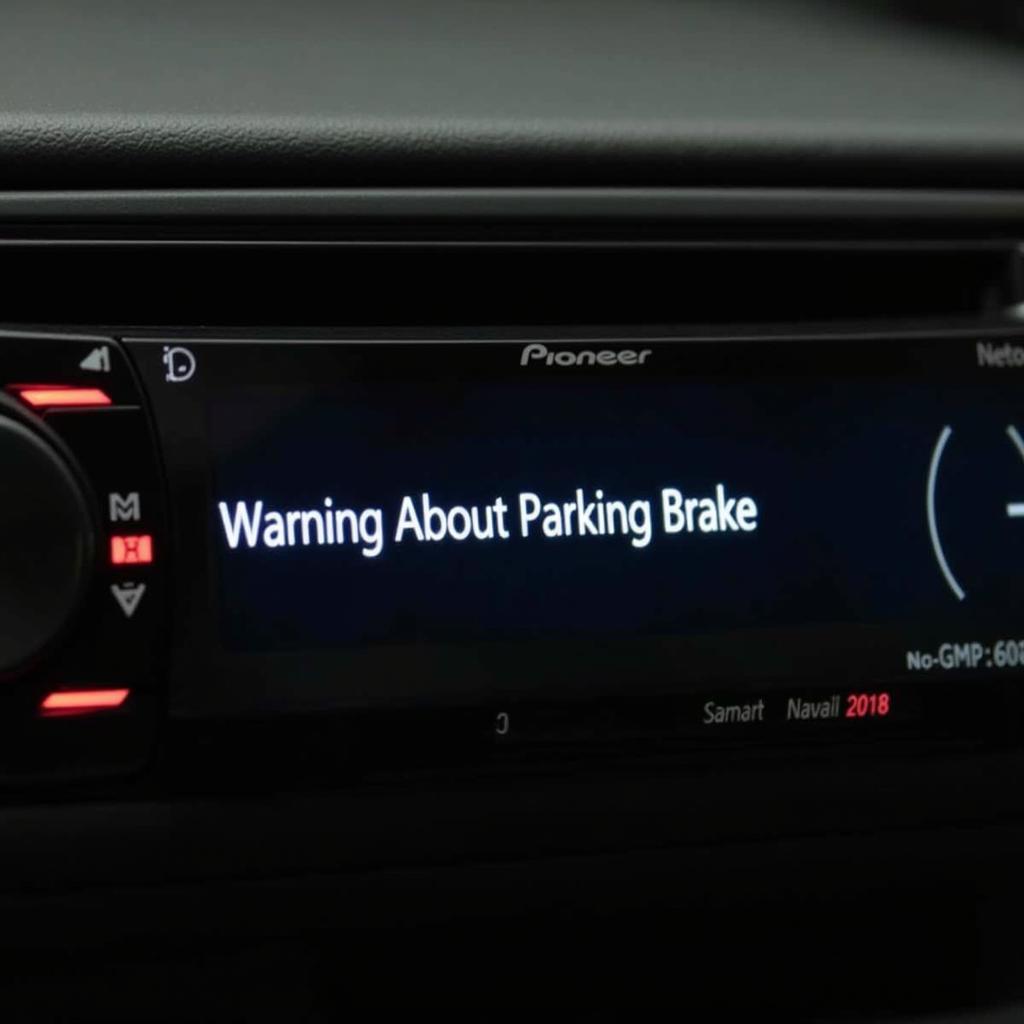The 2001 Suburban brake warning light bulb illuminating on your dashboard can be a jarring experience. It signals a potential issue within your braking system, demanding immediate attention. This article will guide you through the common causes, diagnostic procedures, and solutions for a 2001 Suburban brake warning light bulb issue, empowering you to address the problem effectively.
Understanding the Brake Warning Light
The brake warning light is a critical safety feature in your 2001 Suburban. Its primary function is to alert you to potential problems within the braking system. These problems can range from something as simple as a low brake fluid level to more complex issues like a malfunctioning ABS system. Ignoring this warning light can lead to dangerous driving conditions and costly repairs.
Common Causes of a Lit Brake Warning Light in a 2001 Suburban
Several factors can trigger the brake warning light in your 2001 Suburban. Understanding these potential causes is the first step towards resolving the issue.
- Low Brake Fluid: This is the most common culprit. Brake fluid naturally depletes over time, and a low level can trigger the warning light.
- Worn Brake Pads: Thin brake pads can activate a sensor that illuminates the warning light.
- Faulty Brake Light Switch: The brake light switch, located near the brake pedal, can malfunction and cause the warning light to come on.
- ABS Issues: Problems with the Anti-lock Braking System (ABS), such as a faulty sensor or module, can trigger the warning light.
- Parking Brake Engaged: Sometimes, the warning light is simply a reminder that the parking brake is still engaged.
Diagnosing the Problem
Once you’ve identified the potential causes, you can begin the diagnostic process. This involves a systematic approach to pinpoint the exact issue.
- Check the Parking Brake: Ensure the parking brake is fully disengaged.
- Inspect Brake Fluid Level: Open the hood and locate the brake fluid reservoir. Check the fluid level and add brake fluid if necessary, ensuring you use the correct type specified in your owner’s manual.
- Inspect Brake Pads: Visually inspect the brake pads through the wheel spokes. If they appear thin, it’s time for a replacement.
- Test the Brake Light Switch: A multimeter can be used to test the functionality of the brake light switch.
Solutions and Repairs
Depending on the diagnosis, several solutions can address the brake warning light issue.
- Adding Brake Fluid: If the fluid level is low, simply adding the correct type of brake fluid will often resolve the issue.
- Replacing Brake Pads: Worn brake pads require replacement to ensure optimal braking performance and safety.
- Replacing the Brake Light Switch: A faulty brake light switch necessitates replacement, which is a relatively simple procedure.
- Addressing ABS Issues: More complex ABS problems may require professional diagnosis and repair using specialized diagnostic tools. Often, this involves replacing a faulty sensor or module.
“A properly functioning brake system is crucial for safety,” says John Miller, a seasoned automotive technician with over 20 years of experience. “Never ignore a brake warning light. Addressing the issue promptly can prevent serious accidents and costly repairs down the road.”
Remote Diagnostics and Programming
In some cases, remote diagnostics and programming can be utilized to identify and address certain brake system issues, especially those related to the ABS module. This technology allows technicians to access the vehicle’s computer system remotely to pinpoint and resolve specific problems.
Conclusion
The 2001 Suburban brake warning light bulb is a vital safety indicator. Addressing the underlying issue promptly ensures your safety and prevents further damage to your braking system. While some issues, like low brake fluid, are easily resolved, others may require professional assistance. Remember, a proactive approach to vehicle maintenance is always the best course of action.
“Regular maintenance is key to preventing brake problems,” adds Miller. “Simple checks like monitoring brake fluid levels and inspecting brake pads can save you from headaches and ensure your safety on the road.”
FAQ
- What should I do if my brake warning light comes on while driving? Pull over safely as soon as possible and assess the situation. Check your parking brake, brake fluid level, and visually inspect your brake pads. If the problem persists, seek professional help.
- Can I drive my 2001 Suburban with the brake warning light on? It’s strongly discouraged. Driving with a lit brake warning light can be dangerous.
- How often should I check my brake fluid level? Check your brake fluid level at least once a month.
- How long do brake pads typically last? Brake pad lifespan varies depending on driving habits and conditions, but generally, they should be replaced every 25,000 to 70,000 miles.
- What is the cost of replacing brake pads? The cost varies depending on the type of brake pads and labor rates, but expect to pay between $150 and $300 per axle.
- How can I tell if my brake light switch is faulty? A multimeter can be used to test the switch’s continuity. Alternatively, you can observe if the brake lights function correctly when the brake pedal is pressed.
- What is involved in remote diagnostics and programming for brake systems? This involves connecting a specialized diagnostic tool to the vehicle’s OBD-II port, which allows technicians to access the vehicle’s computer system remotely and identify/resolve issues.

